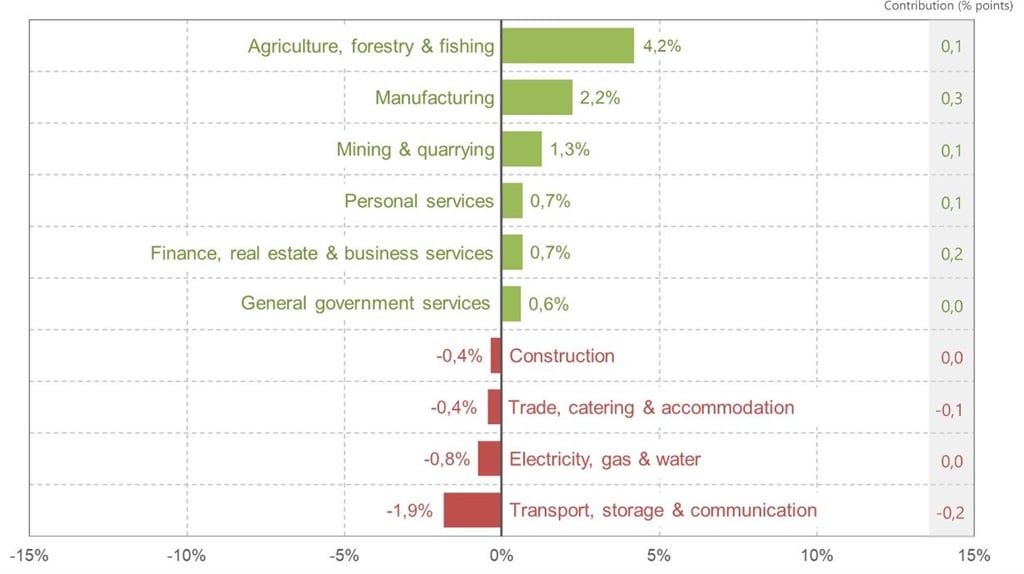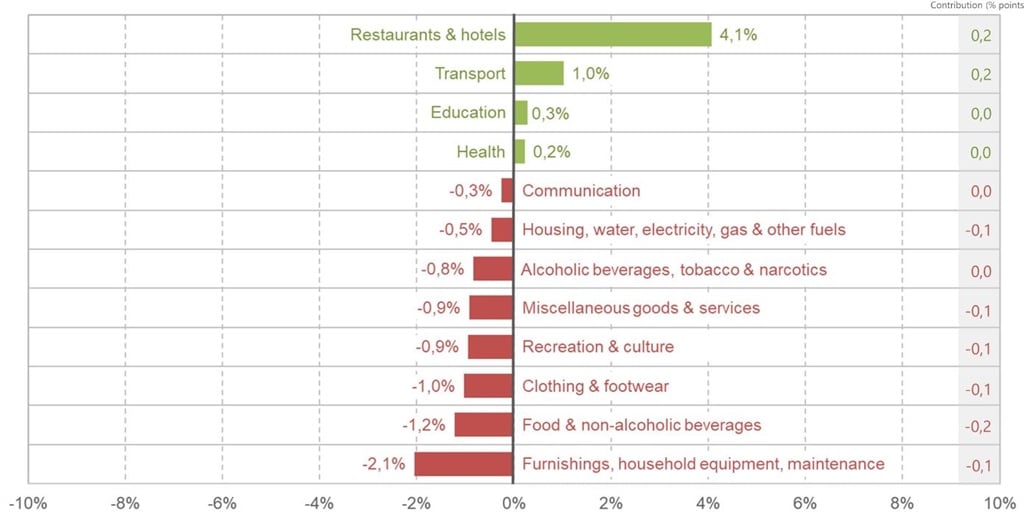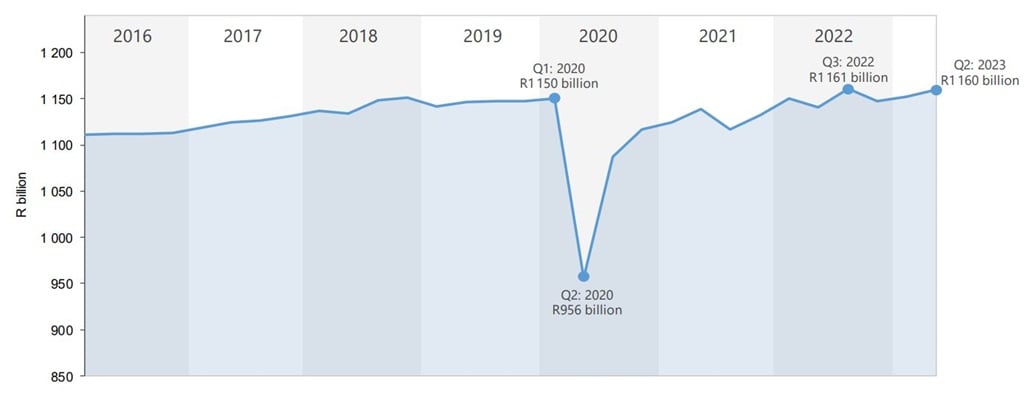

The SA economy grew by 0.6% from the first to second quarter, which was much stronger than expected. The median GDP growth forecast among economists who were surveyed by Reuters was just 0.1%.
A strong performance from manufacturing and mining helped to offset the effects of sky-high interest rates, Transnet woes and a rand crash due to the Lady R diplomatic crisis.
Also, while the second quarter started off with intensive power cuts, June saw the lowest monthly load shedding since August 2022, which helped to bolster the manufacturing industry. The sector grew by 2.2%, with nine of the ten manufacturing divisions expanding in the second quarter, Statistics SA reported.
The mining industry expanded by 1.3%, with the strongest growth coming from platinum group metals, gold and coal. This was despite Transnet’s poor rail performance, which is causing billions in lost revenue for commodity exports.
After shrinking more than 12% in the first quarter, agriculture made a strong comeback, growing by 4.2%. Statistics SA says this was thanks to favourable weather conditions, increased cultivation, and a rise in export demand.
The finance, real estate and business services industry grew by 0.7%. But after growing for nine months, the construction industry shrank in the second quarter.

The economy also benefited from a sharp rise in investments in machinery and equipment, particularly related to renewable energy, Statistics SA said. Gross fixed capital investments increased by 3.9% from the first quarter.
Despite the stronger-than-expected growth in the second quarter, the economy remains under immense pressure – not only from load shedding, but also due to 475 basis points in rate hikes over 18 months and persistently high inflation.
Household incomes are not keeping up with these demands, triggering a rise in bad debts. More than 70% of new credit applications are now being turned down, according to the National Credit Regulator. Interest rates are only expected to be lowered next year.
Household final consumption expenditure decreased by 0.3% in the second quarter, Statistics SA reported. But spending on restaurants and hotels grew.

In the second quarter, the SA economy was 1.6% bigger than a year before. But GDP has still not recovered to its previous peak, reached in the third quarter of 2022.

South Africa avoided a technical recession in the first quarter of 2023, growing by 0.4% – after GDP shrank by 1.1% in the fourth quarter of 2022. A technical recession is defined as two consecutive quarters of a shrinking economy. – news24.com
Sorry. No data so far.

